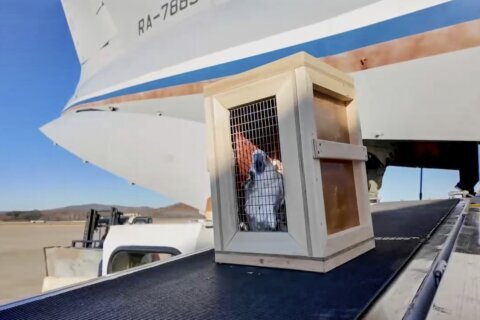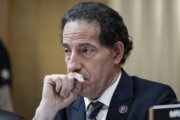ABU DHABI, United Arab Emirates (AP) — A bold, innovative project begun nearly a generation ago to erect a “green-city” in the United Arab Emirates has run into realities and largely missed its mark, offering a cautionary tale about the risk of overblown environmental ambitions even for an oil-rich, future-minded sheikdom.
Now 17 years and billions of dollars in the making, Masdar City next to Abu Dhabi’s airport was first envisioned as a sustainable city of tomorrow with features like no cars, subway “pods” to ferry commuters, and solar-powered buildings rising from the desert sands.
Those things exist, but not nearly to the extent or in the timeframe once imagined.
Masdar City has been a pet project of Sultan al-Jaber, the head of the UAE’s national oil company and the president of the ongoing COP28 climate conference in nearby Dubai, who has sought to cast himself as a promoter of renewable energy transition.
It was launched as a $22-billion, state-funded project to create “the world’s most sustainable eco-city,” with designs from the firm of famed British architect Norman Foster. It was expected to cover six square kilometers (2.3 square miles) and accommodate 50,000 people.
Setbacks doused early hopes. It was originally set to be completed in 2016, then 2020, and now a target date has been shelved indefinitely.
“There’s no line in the sand that we’re rushing to,” said Chris Wan, associate director for sustainability. “It will develop naturally.”
At first, a global financial crisis slowed building projects.
Then, some technological change arrived fast: Electric scooters, bikes and autonomous vehicles turned out to be more versatile than its track-bound subway pods. Other changes have come too slowly: Buildings still require concrete – and manufacturing it generates a lot of carbon.
The result, critics say, has been a “failed city” that’s now more of a research hub and office park – some 1,000 businesses have taken up tenancy – that has overshadowed hopes for a broader mix with more retail, residential areas and cultural offerings that a truly livable city would offer.
Federico Cugurullo, assistant professor in sustainable urbanism at Trinity College Dublin, has argued the project has been harmed by tensions between environmental and economic concerns which have dented its ambitions at sustainability.
“It is not a good model for future cities,” he said in an email.
Today, an estimated 15,000 people live and work in Masdar City – but only one-third are residents. The surface area is roughly 3.8 square kilometers (or about 1.5 square miles), though only about one-fourth has been built-up so far. It’s under a sixth of the size of original hopes.
Masdar City’s visionary managers remain unbowed, insisting it’s a work in progress.
Wan, who joined as Masdar City was breaking ground in 2008, said its earliest buildings achieved 40% energy savings: “That was the best we could do with our available knowledge, and making it commercially viable.”
“Fast-forward 15 years and today, using the same methodology, further refined, we are delivering net-zero energy buildings in operation in a commercially viable manner,” he said in an interview in a breezy esplanade tucked under an office building.
He and other city managers say Masdar City remains a showcase for environmental, social and especially economic sustainability and a test bed for research.
Clean energy policies in the UAE grew in the mid-2000s, when the World Wildlife Fund estimated the country had the world’s largest ecological footprint per capita — meaning that each of its residents used more resources on average than those in any other nation. The UAE still ranks high on similar lists.
Steve Severance, director of growth at Masdar City, acknowledged Abu Dhabi built its economic development on hydrocarbons, like oil. “We also looked into the future and said, what does the future of energy look like? It’s not hydrocarbons.”
“The future is renewable energy and sustainability, and we want to be a player in that future,” he said.
Cranes towering overhead give the idea that Masdar City is ramping up again.
French glass and construction materials company Saint-Gobain this year opened a sustainable living “comfort house” early this year. Abu Dhabi’s energy department said Friday it will locate the country’s first “net-zero energy commercial headquarters” in the district by late 2025.
Evidence of engineered efficiency in its tree-lined streets abound: Look one way, there’s a lattice-like tower designed to extract humidity out of the air, to admittedly mixed results. A blue tent touts hydrogen extracted from water for possible use in hydrogen-powered vehicles — one day.
Streets are narrow and orientated to channel the typically northwestern breeze. Siemens, the German energy technology company, has been working on smart-grid technology. Wan said condensation from air-conditioning units – a staple in the sunbaked region – is recaptured as water for irrigation.
Visitors still get treated to eye-popping glitz: kids from a nearby school sit politely by a brightly lit promotional screen wall as the pods — a bit reminiscent of ski-lift gondolas — whiz up to berths to pick up passengers.
Trinity College’s Cugurullo criticized the project for focusing too much on luring in clean energy companies, rather than more mundane issues like housing for regular people.
Wan acknowledged the criticism, but said the city still wins in the end – for three reasons.
“The only failure that we really recognize and the world should recognize is the failure to start. We all have to start,” he said. “The second part to this is also very simple. If we are a failed city, then would we say that if Masdar city never existed, the world would be a better place? We believe not.”
He insisted the lessons for future cities, and everyone will gain.
“A lot of people are now coming to us, and say: ‘As a city. We’re going to do better,’” Wan said. “We say ‘fantastic’. Everyone should aim to do better than us because when that happens, that’s it. We will celebrate.”
___ Lujain Jo and Kamran Jebreili in Abu Dhabi, and Sibi Arasu and Jon Gambrell in Dubai, United Arab Emirates contributed to this report.
___
Associated Press climate and environmental coverage receives support from several private foundations. See more about AP’s climate initiative here. The AP is solely responsible for all content.
Copyright © 2024 The Associated Press. All rights reserved. This material may not be published, broadcast, written or redistributed.







